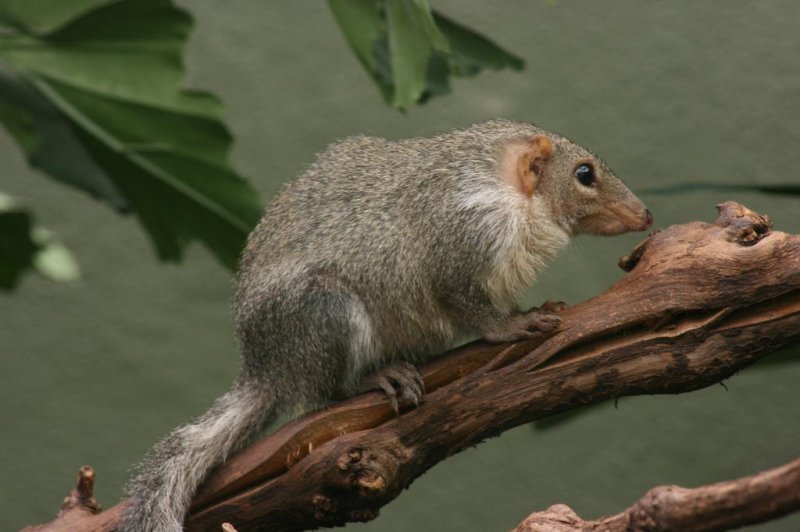Treeshrews don't follow the ecogeographical rules governing body size variation. Photo by Anthony Cramp/
Flickr
Jan. 5 (UPI) -- The tiny treeshrew is a breaker of evolutionary rules, specifically of the ecogeographical type.
According to a new paper published this week in the journal Ecology and Evolution, the common treeshrew, Tupaia glis, flouts both the island rule and Bergmann's rule, a pair of rules describing expected geographical variation within a species.
According to the island rule, specimens of small mammals living on islands tend to evolve larger bodies than their relatives on the mainland. Larger mammals tend to evolve smaller bodies on islands.
Bergmann's rules describe the tendency for populations of a species to evolve larger bodies in colder climates, among higher latitudes, while populations closer to the equator, living in warmer climates, develop smaller bodies.
Researchers measured the body size of 260 common treeshrews -- specimens sourced from six natural history museums, collected over the last 122 years. The specimens represented populations from the Malay Peninsula and 13 offshore islands.
Scientists found size difference between mainland and island shrews. They also determined that the species inverts Bergmann's rule. Treeshrews from lower latitudes tended to be larger.
"Determining the causes of geographical variation within a species is critical to understanding underlying mechanisms of evolutionary patterns," Eric J. Sargis, a professor of anthropology at Yale, said in a news release. "Our analysis demonstrates the need to assess multiple variables simultaneously when studying ecogeographical rules in a broadly distributed species like the common treeshrew, as multiple factors may have influenced how populations evolved."
Scientists did find some patterns. Treeshrews on smaller islands tended to have smaller body sizes, as did treeshrews separated from the mainland by the deepest water.
Researchers stressed that their work wouldn't have been possible without robust local museum collections.
"Without well-documented and curated voucher specimens collected from numerous localities and in large enough numbers to assess statistical significance, we simply could not have done this research," said Link E. Olson, curator of mammals at the University of Alaska Museum.















